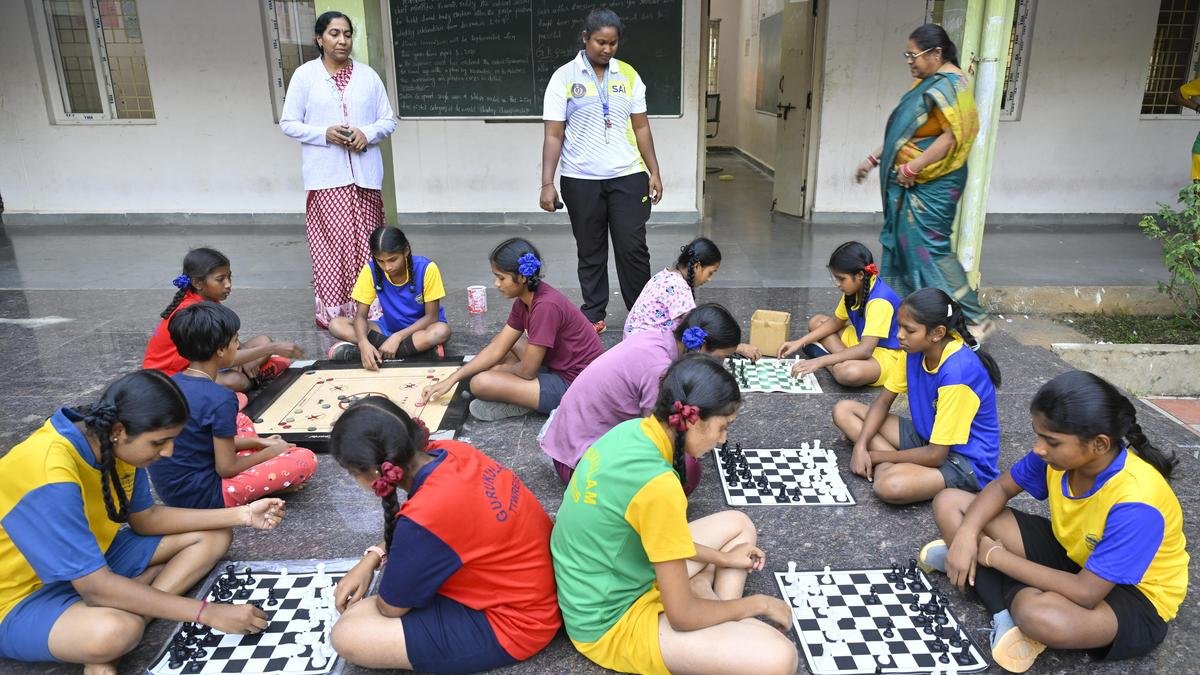In today’s digital era, children are growing up surrounded by smartphones, tablets, laptops, gaming consoles, and streaming platforms in Telagana. While technology provides education, entertainment, and connectivity, excessive screen time has become a serious concern for parents, educators, and healthcare professionals. The increasing dependence on digital devices is affecting children’s physical fitness, mental well-being, and social development. As a result, families, schools, and communities are now seeking ways to gently nudge children to swap screens for sports, promoting healthier and more active lifestyles.
This article explores the need for this shift, the harmful effects of screen overuse, strategies to encourage sports participation, and the role of parents, schools, and society in shaping a balanced childhood.
1. The Rising Concern of Excessive Screen Time
Over the past decade, children’s screen time has increased drastically due to the widespread availability of digital devices and easy internet access. Many children spend several hours a day watching videos, scrolling social media, or playing online games. This sudden growth is driven by:
- Increased online education
- Growth of OTT platforms
- Popularity of mobile gaming
- Influence from peers and online trends
- Lack of outdoor play spaces in urban areas
While moderate screen use is not harmful, prolonged usage leads to physical inactivity, reduced attention span, sleep disturbances, and even emotional dependency on digital content. This makes it essential to redirect children toward healthier alternatives such as sports.
2. Why Encouraging Sports Is Essential
Sports offer a holistic solution to many problems created by excessive screen time. Playing outdoors or joining sports activities helps in:
- Developing physical strength, stamina, and immunity
- Improving concentration, discipline, and emotional balance
- Enhancing social bonds through teamwork and communication
- Reducing stress and anxiety
- Building leadership and decision-making skills
Unlike passive screen consumption, sports require active engagement, which strengthens both the body and brain. Encouraging children to embrace sports not only supports their current well-being but also builds long-term healthy habits.
3. Negative Impacts of Excessive Screen Use on Children
Before nudging children toward sports, it is important to understand the harmful effects of uncontrolled screen exposure:
a. Physical Health Issues
Long hours of sitting lead to obesity, eye strain, posture problems, and vitamin D deficiency. Children may experience headaches, sleep disorders, and chronic fatigue due to irregular screen use.
b. Mental and Emotional Problems
Excessive screen time can reduce patience, increase irritability, and overstimulate the brain. Social media exposure also affects self-esteem and emotional stability.
c. Decline in Academic Performance
Overuse of mobile devices impacts concentration and memory, resulting in reduced academic interest and lower grades.
d. Reduced Social Skills
Children spending more time on screens tend to avoid real-world interactions, affecting communication abilities and friendships.
These risks highlight why timely intervention is crucial.
4. How Parents Can Gently Nudge Children Toward Sports
Parents play the most important role in shaping children’s habits. Instead of strict rules or punishment, positive nudging produces better results.
a. Lead by Example
Children imitate what they see. Parents who walk, play, or exercise regularly motivate their children to do the same.
b. Create a Balanced Routine
Set a daily schedule that includes homework, playtime, and limited screen use. A predictable routine helps children feel secure and disciplined.
c. Offer Choices, Not Commands
Allow children to choose which sport they want to try—cricket, badminton, swimming, athletics, football, etc. Giving options makes them feel empowered.
d. Make Sports Fun
Instead of forcing competitive sports, start with fun activities like cycling, badminton rallies, frisbee, or simple outdoor games.
e. Reduce Screen Temptations
Keep mobile devices out of bedrooms, avoid giving phones during dinner, and create ‘no gadget hours’ for the whole family.
f. Appreciate Every Attempt
Praise children for effort, not just performance. Appreciation builds enthusiasm and confidence.
5. Schools and Teachers as Key Influencers
Schools have the power to instill the habit of physical activity through structured programs:
- Mandatory sports periods
- Inter-class competitions
- After-school training clubs
- Inclusion of yoga and fitness activities
- Recognizing sports achievements
- Organizing annual sports festivals
Teachers and coaches can motivate children by sharing stories of athletes, demonstrating the fun side of sports, and encouraging teamwork.
6. Community and Government Support
Beyond homes and schools, community support is equally important:
- Safe playgrounds and parks
- Affordable sports coaching centers
- Local tournaments and leagues
- Awareness campaigns on screen addiction
- Government schemes encouraging youth sports participation
When communities provide accessible play spaces and opportunities, children naturally choose outdoor activities over screens.
7. Finding the Right Balance
The goal is not to completely eliminate screens but to maintain a healthy balance. Modern education, communication, and entertainment rely heavily on technology. The real challenge is ensuring that children enjoy digital benefits without compromising their health.
A balanced lifestyle includes:
- Limited and mindful screen use
- Regular sports and exercise
- Outdoor playtime
- Engaging hobbies like reading, art, or music
- Adequate sleep and family interaction
When children experience the joy of sports, they naturally reduce screen dependency.
Conclusion
Nudging children to swap screens for sports is not just a parenting strategy—it is an investment in a healthier, happier, and more confident generation. With mindful guidance from parents, supportive school environments, and accessible community resources, children can grow up enjoying the best of both worlds: the advantages of technology and the life-changing benefits of physical activity. Encouraging sports today ensures a brighter, stronger, and balanced future for tomorrow’s children.
Do Follow Us Instagram







